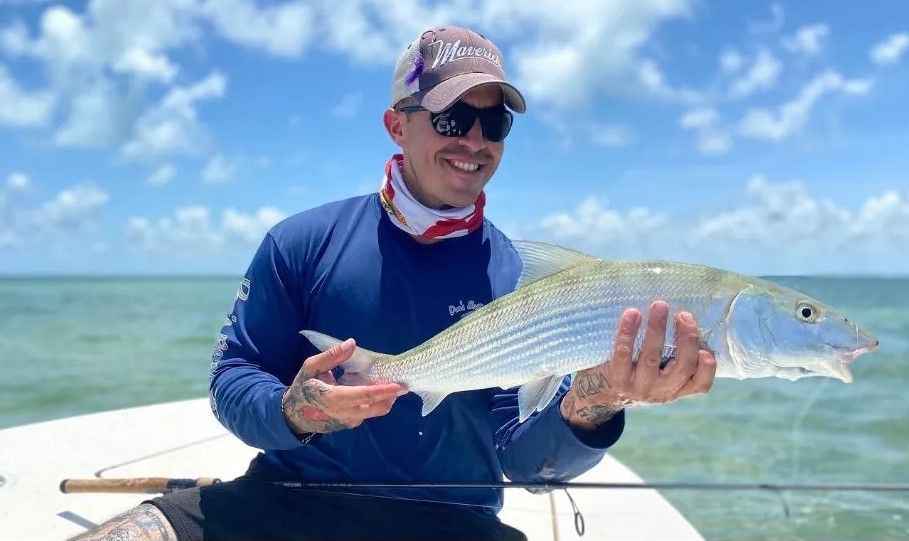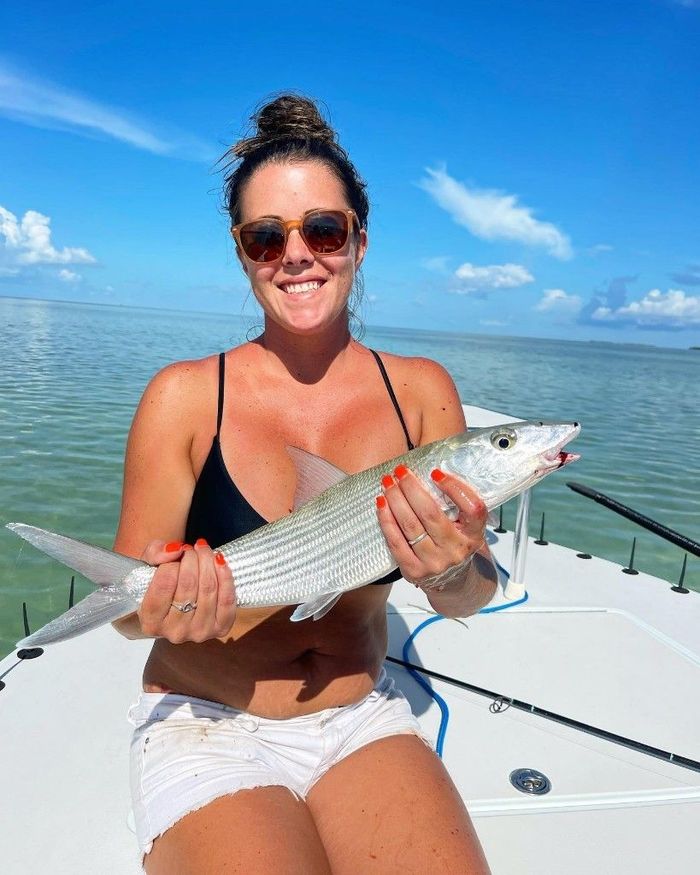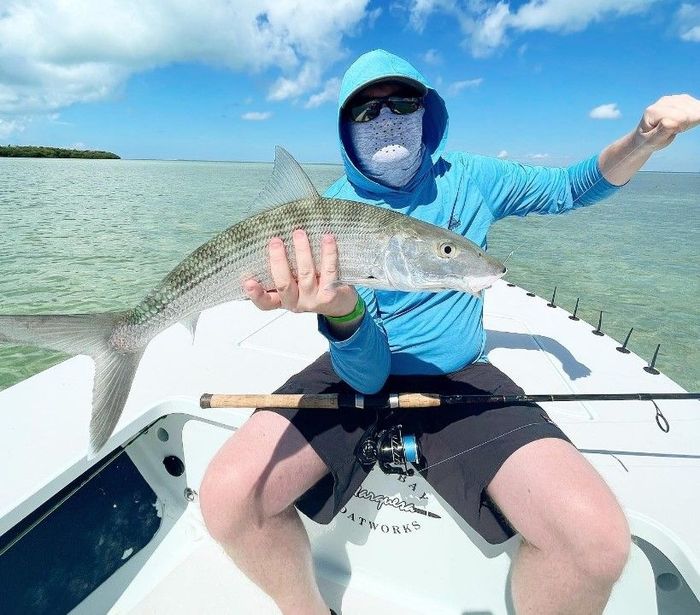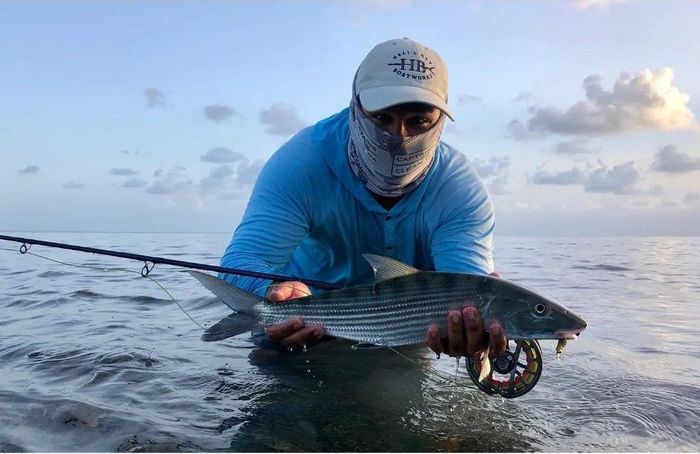Bonefishing: A Complete Guide
A complete guide to bonefishing, including the best bonefishing destinations, equipment and techniques.

Welcome to the ultimate bonefishing guide! Are you ready to catch the big one? Bonefishing is one of the most exciting and challenging forms of fishing out there. These elusive creatures are known for their speed and cunning, making them a worthy adversary for any angler. But fear not - we've got you covered with seven expert tips for catching the ultimate bonefish. From choosing the right gear to mastering your casting technique, we'll give you all the tools you need to land that trophy fish. So grab your rod and reel, and let's get hooked on bonefishing!
Choosing the Right Gear for Bonefishing
Bonefishing, the sport that involves the pursuit of the elusive bonefish, requires a certain level of expertise and the right gear to make the catch. For those just starting, it's essential to understand the different types of rods and reels designed explicitly for bonefishing. Don't be fooled by those who claim a heavy-duty rod is necessary to reel in these fighters; a medium-action rod with a light-weight reel is more than enough for novice anglers. As you gain more experience and become a seasoned pro, you can upgrade your gear to suit your style and preference. Just remember, when it comes to bonefishing, it's not all about the gear - there's also an art to reading the tides, spotting the fish, and making the perfect cast. So, grab your rod and reel, get out there, and let's show those bonefish who's boss!

Moreover, bonefishing is not just about choosing the right fly, but also about selecting the appropriate gear. As a seasoned angler, you must understand that bonefish are finicky creatures and can be easily spooked by even the slightest disturbance in the water. This is where selecting the correct line weight comes into play. A lightweight line with a faster sink rate will help bring your bait down to the strike zone quickly and give you an edge over other anglers on the water. It is important to remember that bonefishing is not just a sport, but an art form. So put on your thinking cap, choose your gear wisely, and get ready to reel in some bonefish!

Essentials for Successful Bonefishing
Bonefishing is a form of fishing that requires a specific set of skills and equipment to be successful. What is bonefishing, you ask? Well, it's a thrilling challenge involving the elusive bonefish, a notoriously tricky fish species to catch. To have any chance of success, it is vital to have the right equipment and tackle. This includes a good quality fly rod, reel, and lines - without these, you may be casting your line into thin air! You'll also need to get your hands on some specialized flies designed specifically for bonefish. And let's not forget about your leader material - this connects your fly to your line and needs to be strong and invisible to the fish. So, if you're looking to take on the challenge of bonefishing, make sure you've got the right gear - because without it, those bonefish will keep giving you the slip!
Bonefishing is a thrilling adventure involving much more than just throwing your line into the water and waiting for a bite. Having the proper knowledge of saltwater fly-fishing techniques is essential for successful bonefishing. This includes mastering casting techniques, knowing when to wade or drift in the water, spotting those elusive bones in shallow waters, and being fully aware of changing tides and winds. Bonefishing is not for the faint of heart. It requires an insane amount of patience, skill, and knowledge. So, if you're up for the challenge, grab your gear and prepare to embark on an unforgettable journey filled with excitement and adrenaline!
However, when it comes to bonefishing, understanding the behavior of the fish is crucial. Bonefish are known for their skittish nature, making them difficult to catch. By taking the time to observe their feeding patterns, you can increase your chances of a successful day on the water. From their preferred bait to the time of day they're most active, the more you know about bonefish behavior, the better your chances of landing that trophy catch. So, next time you're planning a bonefishing trip, don't forget to do your homework and study up on these elusive creatures. With a bit of patience and knowledge, you'll be reeling in bonefish like a pro in no time!
Preparation & Planning - Key to Catching the Ultimate Bonefish
When it comes to bonefish, preparation, and planning are key. Before your next bonefish expedition, make sure you do your research on the area you plan to fish in. Think of it like preparing for a job interview - you wouldn't show up without doing your homework on the company, would you? The same goes for bonefish. Each area has its unique characteristics and requires different tactics to reel in these slippery critters. So, put on your detective hat and get to work, because a successful bonefish trip means more than just bragging rights - it means serious bragging rights.

When it comes to bone fishing, there's more to it than just casting and reeling. You have to know the tides and weather patterns like the back of your hand. It's almost like being a weatherman, but instead of using a green screen, you're using a fishing rod. Understanding the patterns will help you decide on the kind of bait, lure, or fly to use, and more importantly, where to use them. For instance, if you're facing a larger tide, you'll need a heavier weight or a larger hook size as it'll help push your offering to deeper waters where these fish tend to feed more often. So if you're planning on going bone fishing, make sure you're more than just a one-trick pony. Get your weatherman cap on and know exactly where to go bone fishing.
Also, let's not forget the joys of fly fishing for bonefish. There's something magical about the overlap of technique, patience, and strategy that makes it one of the most challenging and rewarding forms of fishing. Whether you are a seasoned pro or just starting, understanding how bonefish move, what times of day are best for fishing, and which lures or flies have proven successful in your area can make all the difference in your success. So, grab your gear and hit the water! With a little bit of knowledge and a whole lot of determination, you'll be sure to land that prized bonefish before you know it. Happy fishing!

Tips for Spotting and Ranging a Bonefish
When it comes to bonefishing, timing is everything. But once you've got that down, the next step is knowing how to spot and range them. Fortunately, bonefish can often be found feeding in shallow, sandy-bottomed lagoons. So, keep an eye out for those dark shapes lurking just offshore. When is the best time to go bonefishing, you ask? Avoid the rainy season and aim for the cooler months when these crafty creatures are more active. And if you're looking for a challenge, try catching one on the fly. Just remember to keep your eyes peeled and your wits about you. Happy hunting!
However, once you master the art of spotting bonefish from a distance, your chances of catching them increase significantly. Remember to watch for wakes that indicate their movement and focus your attention on areas where they are likely to seek cover, such as mangrove roots and grass beds. With this in mind, you can start planning your next adventure to some of the best bonefishing spots in the world. Whether you choose the Bahamas, Florida Keys, or Belize, there's no shortage of thrilling opportunities to catch this elusive fish. So grab your gear, practice your casting skills, and get ready to reel in some bonefish!
Fishing Techniques to Catch the Ultimate Bonefish
Ah, bonefishing. The ultimate challenge for any angler looking to prove their skills on the water. But where does one go to catch the elusive bonefish? That question could spark a debate more heated than arguing over the best pizza toppings. However, regardless of where you cast your line, proper presentation is key to reeling in the big one.
When it comes to targeting bonefish, you need to make sure your fly lands in its strike zone. These silver bullets of the ocean are known for being notoriously picky eaters, so presenting your fly in a way that mimics their natural prey is essential. You don't want to be that guy who throws a giant fly in front of a school of bonefish and scares them all away. Trust us, they won't be impressed.
To ensure success on your bonefishing adventure, take the time to learn about the specific feeding habits and patterns of these elusive creatures. And don't be afraid to try different flies and techniques until you find what works best for you. Like any sport, practice makes perfect, so get out there and cast away.
So, whether you're heading to the crystal-clear waters of the Bahamas or the lush flats of Belize, remember to keep proper presentation in mind. After all, you never know when that bonefish of a lifetime will bite. Happy fishing!
After that, when it comes to bonefishing, it's important to remember that accuracy is key. You don't want to cast too far and miss the school or send them fleeing in the opposite direction. Trust us, bonefish have a sixth sense for detecting danger. So, take your time and focus on the presentation. And always remember to stay a step ahead of these elusive fish. With the right leader and line, and a bit of patience, you'll be sure to land a beauty in no time! Happy fishing, bonefishing enthusiasts!
When to Fish & Where to Fish for a Bonefish
Have you ever heard of bonefishing? No, it's not some new fad of using fish bones for decorative purposes. It's a popular form of fishing, particularly in the Bahamas and South Florida. Bonefishing is all about catching the elusive bonefish, which resides in shallow waters. So, when is the best time to catch these slippery devils? Well, the prime time for bonefishing is when the tide is incoming, and the wind is light. This is because these conditions provide the best visibility to spot a bonefish in its natural habitat. So, if you're itching to catch a bonefish and want to increase your chances of success, plan your trip accordingly. Happy bonefishing!

Let's set the stage, you travel to South Florida and want to try your luck bonefishing Key West. A great flats fishing opportunity awaits, especially for fly fishing the shallow water on the flat. You grab your favorite fly rod, probably a 7 wt fly rod on a calm day or an 8 wt fly rod on a windy day. Now we grab our bonefish flies.
First on our list of bonefish flies is the Gotcha fly, a classic pattern popular among bonefish anglers for decades. This fly mimics small shrimp or crab patterns that bonefish feed on in shallow waters, making it an excellent choice for flats fishing. The Gotcha fly features a tan or pink body with white wings and tail, tied on a size 4-8 hook. Another favorite among experienced bonefish anglers is the Crazy Charlie fly.
We have our equipment and head to the saltwater flats looking for tailing bonefish. The big bonefish are cruising the early tides looking for crustaceans along these bonefish flats. The fly fishing strategy is to sight fish tailing bonefish. A great cast across the face of the tailing fish that sinks quickly. And let me tell you, flats with white sand bottoms are like the bonefish's version of a red carpet. These sleek creatures love to strut their stuff through the clear waters, and white sand bottoms provide the perfect backdrop for spotting their tails as they poke through the surface. It's like a game of peek-a-boo, but instead of a giggling toddler, you've got a fierce bonefish ready to take your fly. So, next time you're hunting for some bonefishing action, keep your eyes peeled for those sandy flats – it's where the cool kids hang out.
If fly fishing is not your thing, spin fishing with live bait will also work. And while we are speaking on gear, the best way to get on fish is to book a fishing guide or a fishing charter and work with a professional who will provide the best gear and get you to the perfect flat with tailing bonefish.
Top Bonefishing Destinations:
- Key West & Islamorada, Florida Keys
- Bahamas
- Christmas Island, Kiribati
- Biscayne Bay, Florida
- Los Roques, Venezuela
- Oahu's Kaneohe Bay, Hawaii
- Belize
- Ascension Bay, Mexico
- Seychelles
- Andros Island & South Andros Island, Bahamas
- Baja Peninsula, Mexico
- Long Island, Bahamas
- Maui's Kahului Harbor, Hawaii
- Tampa Bay
- Crystal River




